Do you know every year how many people are losing their lives to air pollution? It is easy to overlook but the chances of saving is not handy! Have you ever wondered why many health issues related to heart, cancer or respiratory are arising? So, here you can know one of the major reasons is the air pollution that day-by-day breaking the records. Hence, Air pollution and death toll are increasing and alarming the lethal bell globally.
Because, the deadly combination of pollutants and gases can cause various problems. However, it depends on the period of exposure. Living in highly polluted areas and cities can lead to short lifespans. Accordingly, a recent study has claimed that living in polluted cities shortens the average life expectancy from 5 to 12 years. Additionally, chancing of developing severe health issues is higher.
Thus, let us learn about the air pollution and deaths that caused various deadly health effects! Here you can learn about the air pollution death data that is collected from the UNEP (United Nations Environment Organization). Yet, this sombre reality can change with some hope and a call to action.
Taking a Breath Can Be Deadly: Air Pollution and Death
Air pollution is a silent killer that is lurking everywhere. Do you know, that air pollution has claimed 7 million lives globally as per the UNEP data?
Top 10 Countries with the worst Death Tolls Due to Air Pollution in 2019:
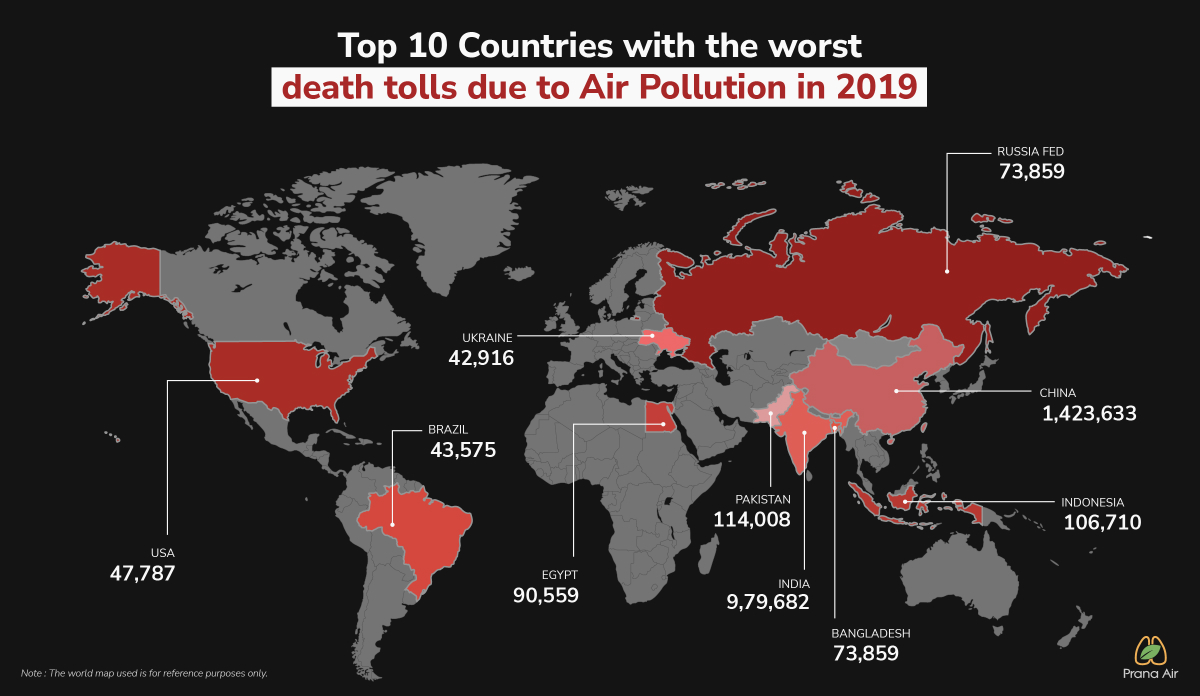
| Countries | Deaths |
| China | 1,423,633 |
| India | 9,79,682 |
| Indonesia | 106,710 |
| Pakistan | 114,008 |
| Egypt | 90,559 |
| Bangladesh | 73,976 |
| Russia Fed. | 73,859 |
Because, air pollution includes many gases and pollutants such as particulate matter, CO2, SO2, NO2, TVOCs etc. Besides, indoor and outdoor pollution is equally lethal to impact any person’s health. Therefore, understanding the dead span of air pollution is necessary. Since it is impacting everyone globally as development in every sector is putting a burden on the environment. Developing countries with overpopulation face high concentrations from traffic and industries. Here in the blog, explore more about air pollution and the death toll.
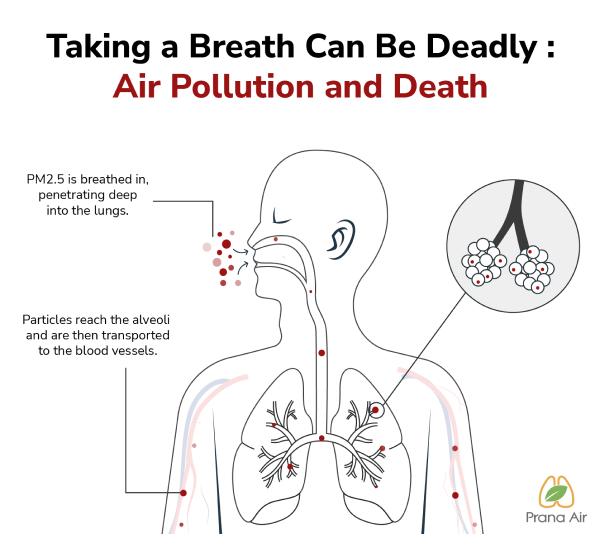
Mostly, the major concern is PM2.5 because of its smaller size. Moreover, these emits from various sources as smoke and dust. PM2.5 size is so small in size that can easily enter the human body deep. It results in even reaching into the bloodstream and damaged various organs.
Here are the 10 countries with significant numbers of deaths per 100,000 people due to air pollution in 2019:
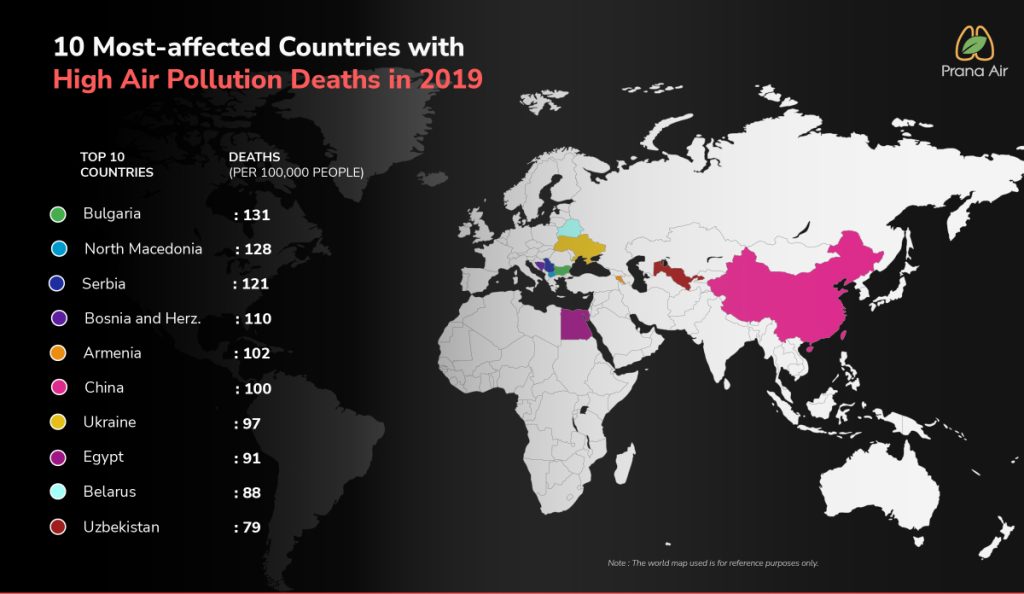
| Countries | Deaths per 100,000 people | Total deaths |
| North Macedonia | 128 per 100,000 people | 2,751 deaths |
| Serbia | 121 per 100,000 people | 10,609 deaths |
| Bulgaria | 131 per 100,000 people | 9,072 deaths |
| Bosnia Herzegovina | 110 per 100,000 people | 3,622 deaths |
| Armenia | 102 per 100,000 people | 3,091 deaths |
| China | 100 per 100,000 people | 1423633 deaths |
| Ukraine | 97 per 100,000 people | 42916 deaths |
| Egypt | 91 per 100,000 people | 90559 deaths |
| Belarus | 88 per 100,000 people | 8403 deaths |
| Uzbekistan | 79 per 100,000 people | 26749 deaths |
Data Source: UNEP.
Major Health Issues Linked to Air Pollution and Death:
Air pollution causes many problems ranging from mild colds and coughs to extreme heart and respiratory conditions. However, air pollution’s health effect depends on the exposure time. Additionally, fine particulate matter is the major culprit for air pollution’s health effects. Because it increases the body’s inflammation and causes many health problems. Consequently, the inflammation hinders the blood flow and affects the oxygen delivery to the heart. It means exposure to air pollution in the long term can be deadly.
Here are the countries with significant mortality due to air pollution related health issues:
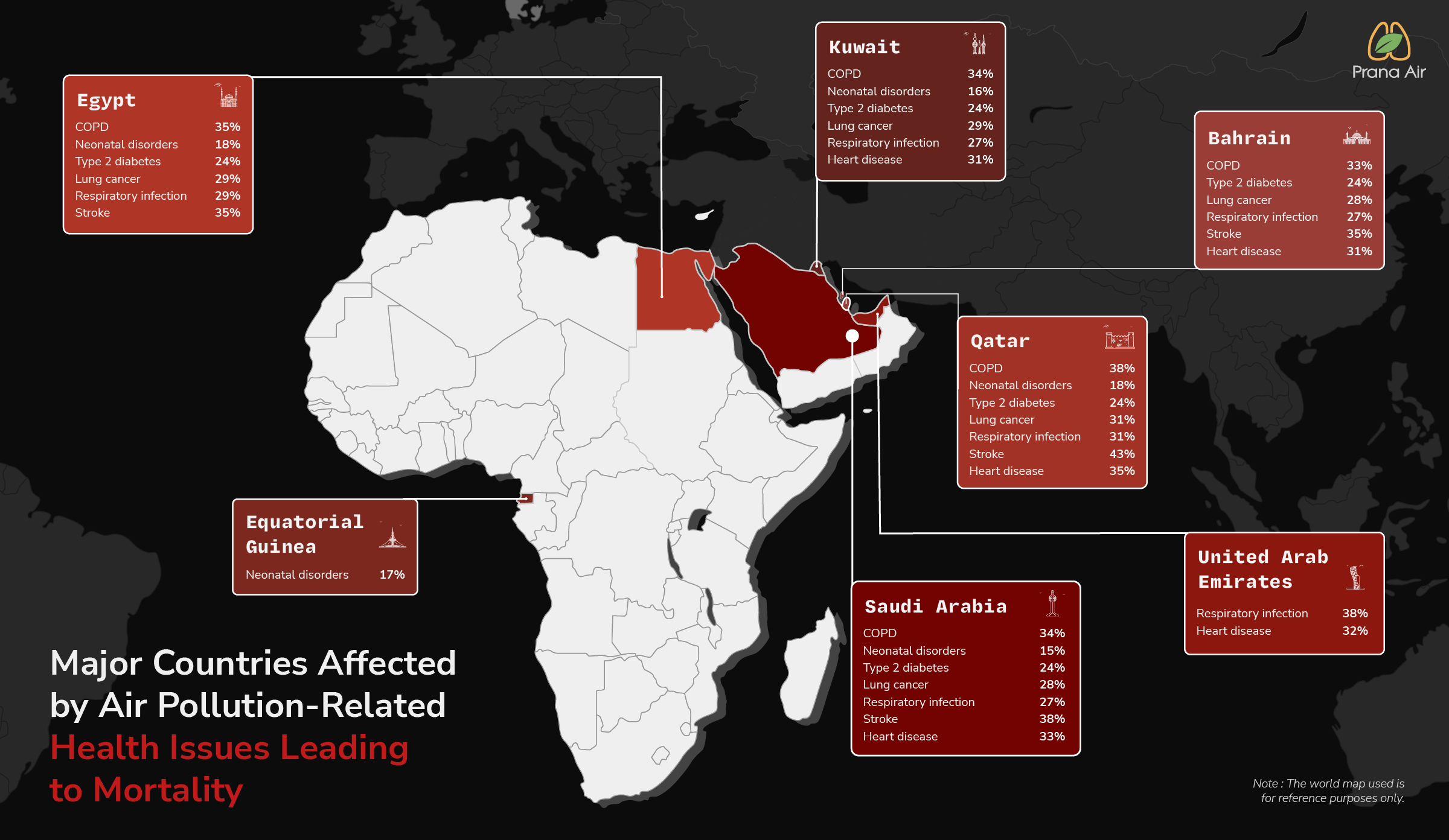
| Diseases | Qatar | Kuwait | Saudi Arabia | Egypt | Equatorial Guinea | Bahrain | UAE |
| COPD: | 38% | 34% | 34% | 35% | – | 33% | – |
| Neonatal Disorders: | 18% | 16% | 15% | 18% | 17% | – | |
| Type 2 Diabetes: | 24% | 24% | 24% | 24% | – | 24% | – |
| Trachea, Bronchus, and Lung Cancer: | 31% | 29% | 28% | 29% | – | 28% | – |
| Lower respiratory infection: | 31% | 27% | 27% | 29% | – | 27% | – |
| Stroke: | 43% | – | 38% | 35% | – | 35% | 38% |
| Ischemic Heart Disease: | 35% | 31% | 33% | – | – | 31% | 32% |
7 Health Issues Linked to Air Pollution and Death:
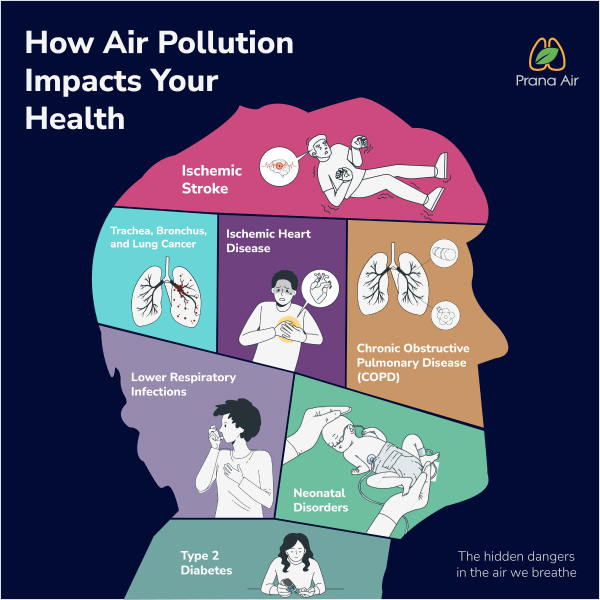
Ischemic Heart Disease:
The main culprit pollutant is PM2.5 which is the concern reason behind heart disease. Since the pollutant size is so small it directly enters blood vessels and damages them. Hence, it increases the inflammation that affects the blood flow and oxygen delivery to the heart. Thus, it attributed to 15% of deaths because of air pollution in 2019.
Stroke
Secondly, Stroke reasons are also increasing because of particulate matter PM2.5. Because, the tiny particles of PM2.5 infiltrate the lungs and bloodstream. Hence, it increases the risk of inflammation and a blood clot that causes stroke risks. Consequently, it resulted in 17% of deaths globally in 2019.
Lower Respiratory Infections
Air pollution triggers the induction of oxidative stress that causes airway inflammation. As a result, it affects the immune function because of infections and allergies. Hence, air pollution can cause various lower respiratory infections. Including pneumonia, acute bronchitis, chronic bronchitis and other issues that can be lethal. Aftermath, it resulted in 13% of deaths due to conditions because of air pollution.
Trachea, Bronchus, and Lung Cancer:
PM2.5 and various air toxins enter the lungs directly which leads to lung cell damage and increases the lung cancer chances. Moreover, the lungs’ defense system weakens due to air pollution. Hence, it increases the serious lung inflammation that causes various infections. Consequently, these conditions caused 15% of deaths in 2019.
Type 2 Diabetes:
Air toxins and particles can interfere with the insulin function in the human body. And it increases inflammation and oxidative stress that increases the risk of developing type 2 diabetes. Aftermath, Type 2 diabetes due to air pollution has contributed to 13% of deaths in 2019.
Neonatal Disorders:
Infants are more sensitive to particles and other pollutants. It can cause various respiratory and lung-related conditions. Long-term exposure to pollution causes upper and lower respiratory infections. With it, short-term exposure is also associated with conditions like pneumonia. Thus, it resulted in 7% of deaths attributed to neonatal disorders due to air pollution.
Chronic Obstructive Pulmonary Disease (COPD):
Again PM2.5 with ozone (O3) and nitrogen dioxide (NO2) enters airways that can damage and irritate. It causes coughing, wheezing, asthma and breathing difficulties that lead to COPD. Hence, COPD contributed to 21% of deaths in 2019.
Conclusion:
Air pollution and deaths are increasing due to significant health impacts. As you can know the above data shows the air pollution health effects. Hence, immediate action is vital to improve the condition and get better results. Therefore, urgent action is needed from governments, industries, communities and individuals worldwide. Because, it helps in having cleaner air and a healthier future.







